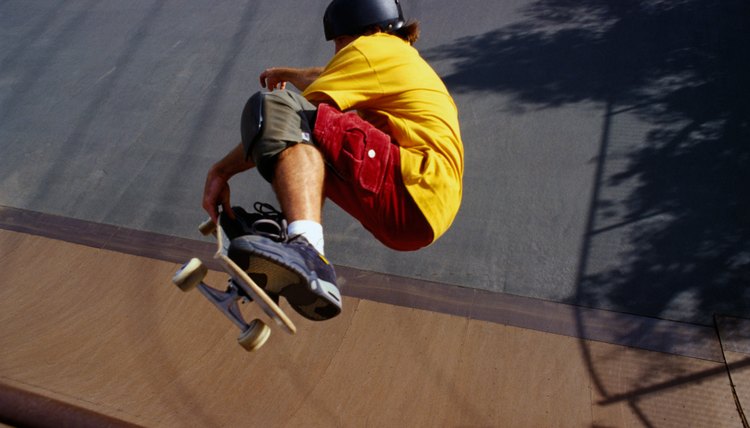How Does Friction Affect Speed on a Skateboard?

Friction and skateboarding do not mix. You need good-working, lubricated bearings for your skateboard to move as desired. However, lack of maintenance and bad surface conditions can contribute to problems. The end result could cause the rider to have a horrible skateboarding session or, worse, fall off and get injured.
Basic Friction and Inertia
A skateboard is propelled by the rider pushing off on a free foot while balancing his body on the skateboard deck with the other foot. This initial push will generally move the board well at first. However, the momentum of the skateboard will slow down because of rough ground surface conditions as well as the friction on the wheel bearings as they roll. Eventually, the board will slow to a stop if the rider does not push forward again.
Corrosion
Wheel bearings are made of metal. When oxidation occurs from exposure to moisture, the bearings can begin to rust and corrode. As corrosion occurs, grit and rust can get between the bearing rollers and cause friction. Over time, the bearings can get so bad that they won't spin easily, if at all. Only very hard pushing on the skateboard will cause the bearings to overcome the friction of the rust in such cases. Replacing the bearings in the wheels will solve the problem.
Ramp Design
While plywood decks can be used on skateboard ramps to provide a basic surface, good ramp design will incorporate smoother final surface layers made of Masonite or similar material. Such surfacing enhances the ramp enjoyment in two ways: it cuts down on the surface friction that occurs when a rider falls, avoiding slivers; and it allows the skateboard to roll smoother. With less resistance from wood, skateboarders can use their momentum and the ramp design to build up speed going back and forth on a half-pipe ramp. This can result in amazing tricks as the rider gets launched well above the top ends of the ramp to come back down seconds later.
Road Hazards
Skateboards use relatively small wheels in their design. When a skateboard is rolling fast down a street with an incline, the wheels can lock up if you happen to run across dirt or small rocks. If this happens, you will fly forward off the board and onto the asphalt. The friction of the obstacle can cause the board to dramatically move slower than the rider on the board, causing the accident.
References
Writer Bio
Since 2009 Tom Lutzenberger has written for various websites, covering topics ranging from finance to automotive history. Lutzenberger works in public finance and policy and consults on a variety of analytical services. His education includes a Bachelor of Arts in English and political science from Saint Mary's College and a Master of Business Administration in finance and marketing from California State University, Sacramento.
